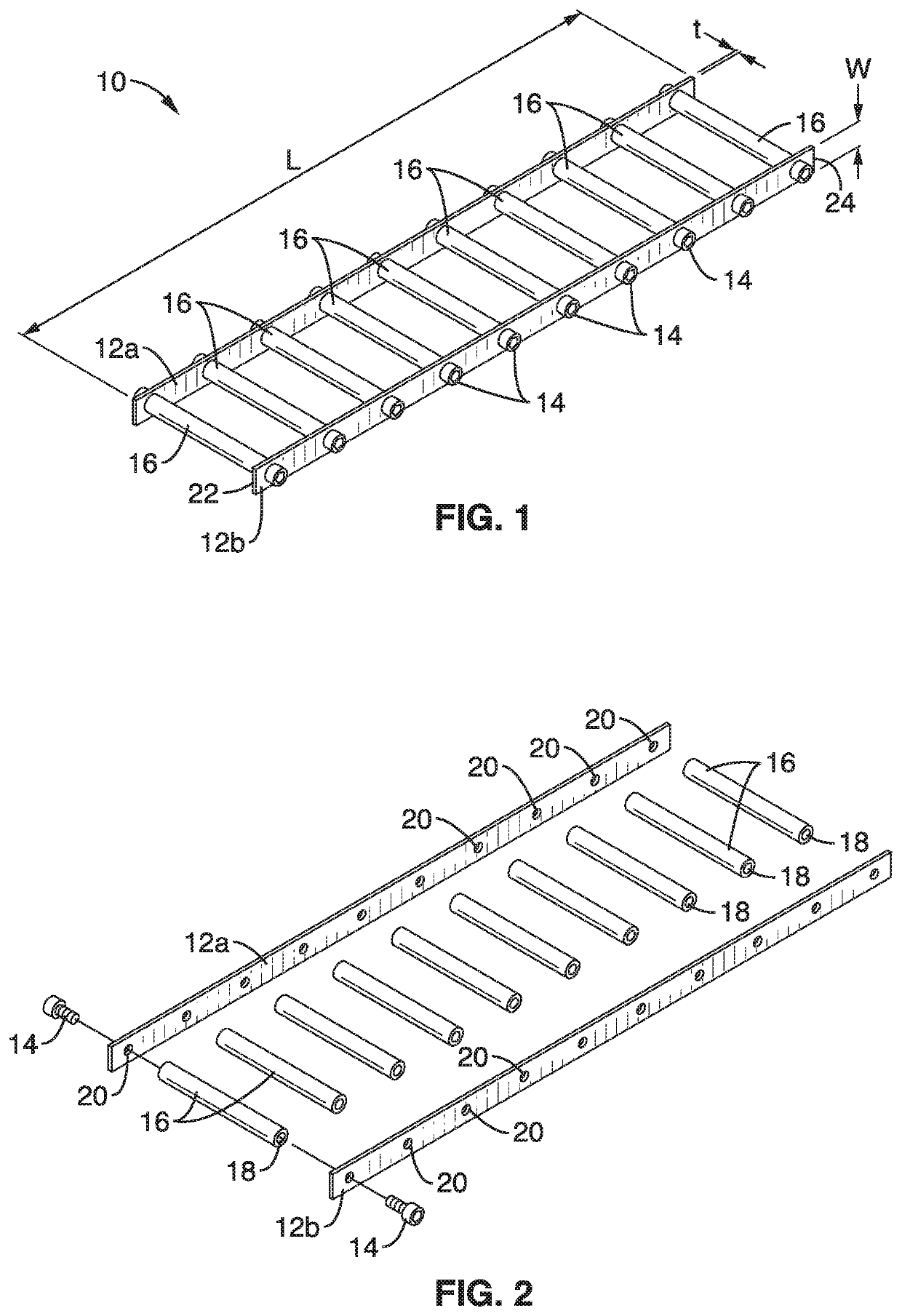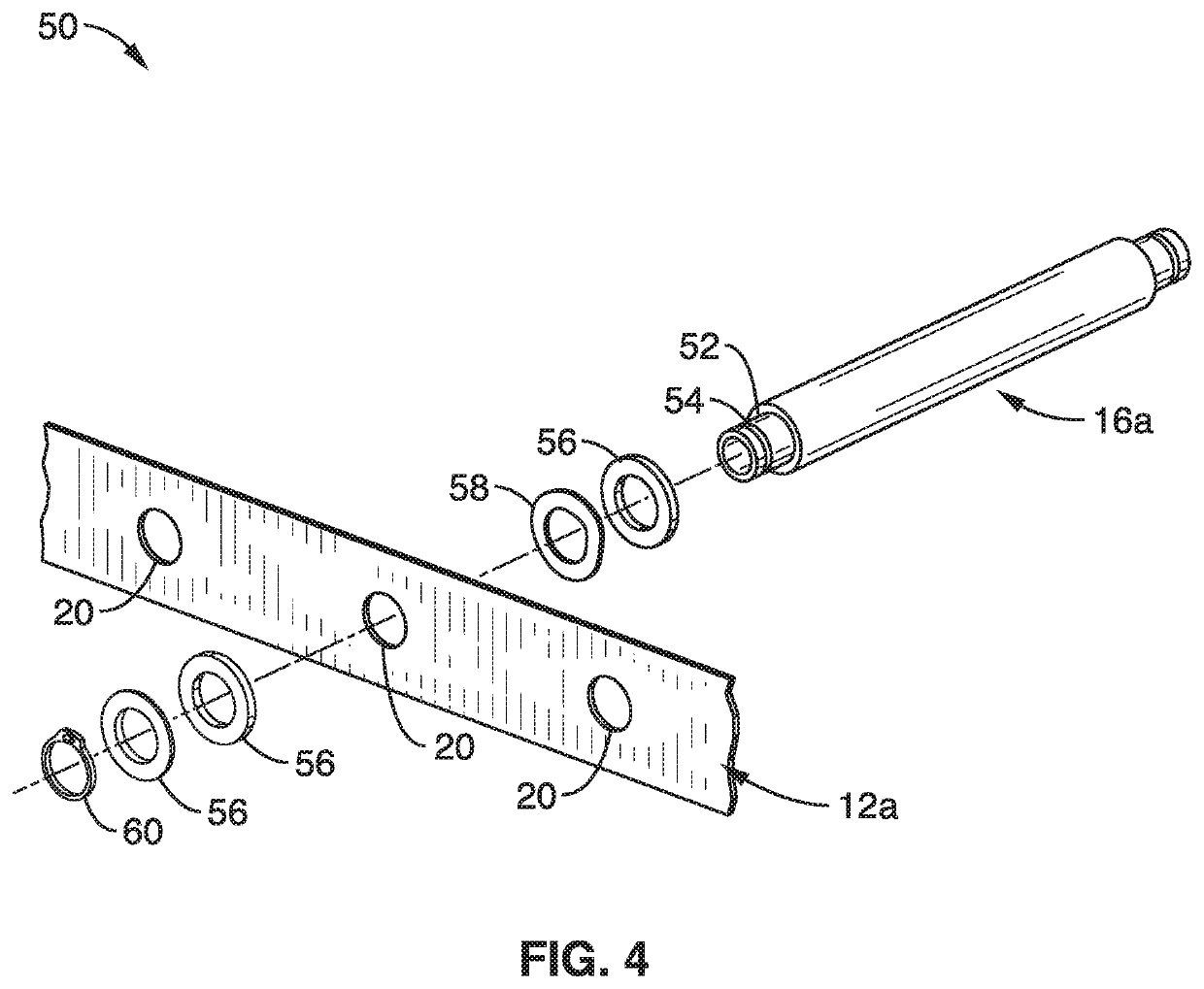DNA structured linear actuator
a linear actuator and dna technology, applied in the field of linear actuators, can solve the problems of limited change in overall length of the actuator, and non-linear response in length change and torque, etc., and achieve the effect of cost, scale, speed and efficiency
- Summary
- Abstract
- Description
- Claims
- Application Information
AI Technical Summary
Benefits of technology
Problems solved by technology
Method used
Image
Examples
Embodiment Construction
[0022]FIG. 1 shows a schematic perspective view of the DNA-structured linear actuator 10 of the present description. FIG. 2 is an exploded assembly view of the DNA-structured linear actuator 10. The linear actuator 10 comprises a ladder-like structure that when twisted along its length resembles a strand of DNA. The actuator 10 comprises a pair of elongate, flexible planar rails (12a, 12b) that are spaced apart by distance d via a plurality of cylindrical rungs 16.
[0023]The rungs 16 are attached to the rails 12a, 12b via a plurality of fasteners 14 at spaced-apart locations on the rails 12a, 12b. Each of the rungs 16 has a first end coupled to the first rail 12a and a second end coupled to the second rail 12b such that the first and second rails 12a, 12b are spaced apart parallel to each other to form a ladder-like structure having a first rail end 22 and a second rail end 24 with a rail length L established at points between rail ends 22, 24. The rails 12a, 12b shown in FIG. 1 and ...
PUM
 Login to View More
Login to View More Abstract
Description
Claims
Application Information
 Login to View More
Login to View More - R&D
- Intellectual Property
- Life Sciences
- Materials
- Tech Scout
- Unparalleled Data Quality
- Higher Quality Content
- 60% Fewer Hallucinations
Browse by: Latest US Patents, China's latest patents, Technical Efficacy Thesaurus, Application Domain, Technology Topic, Popular Technical Reports.
© 2025 PatSnap. All rights reserved.Legal|Privacy policy|Modern Slavery Act Transparency Statement|Sitemap|About US| Contact US: help@patsnap.com



